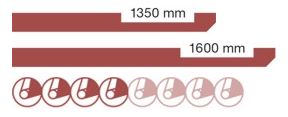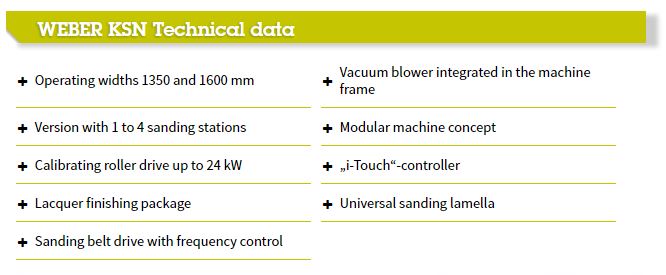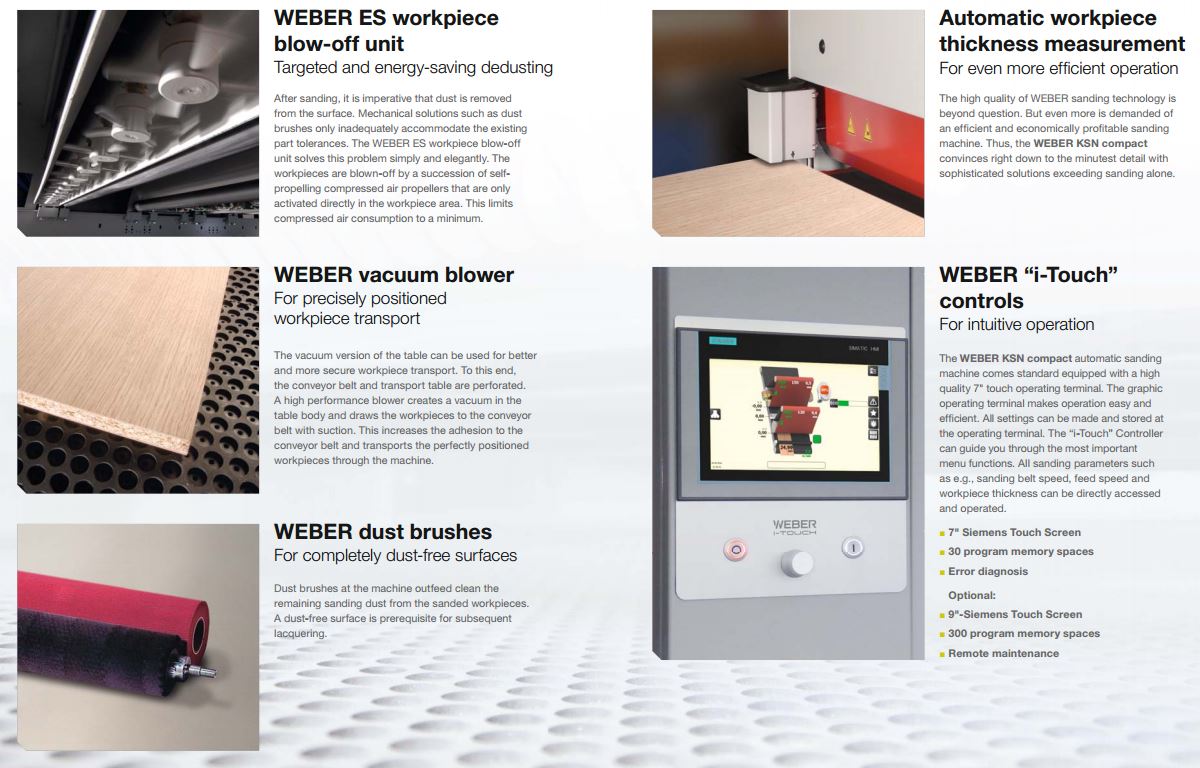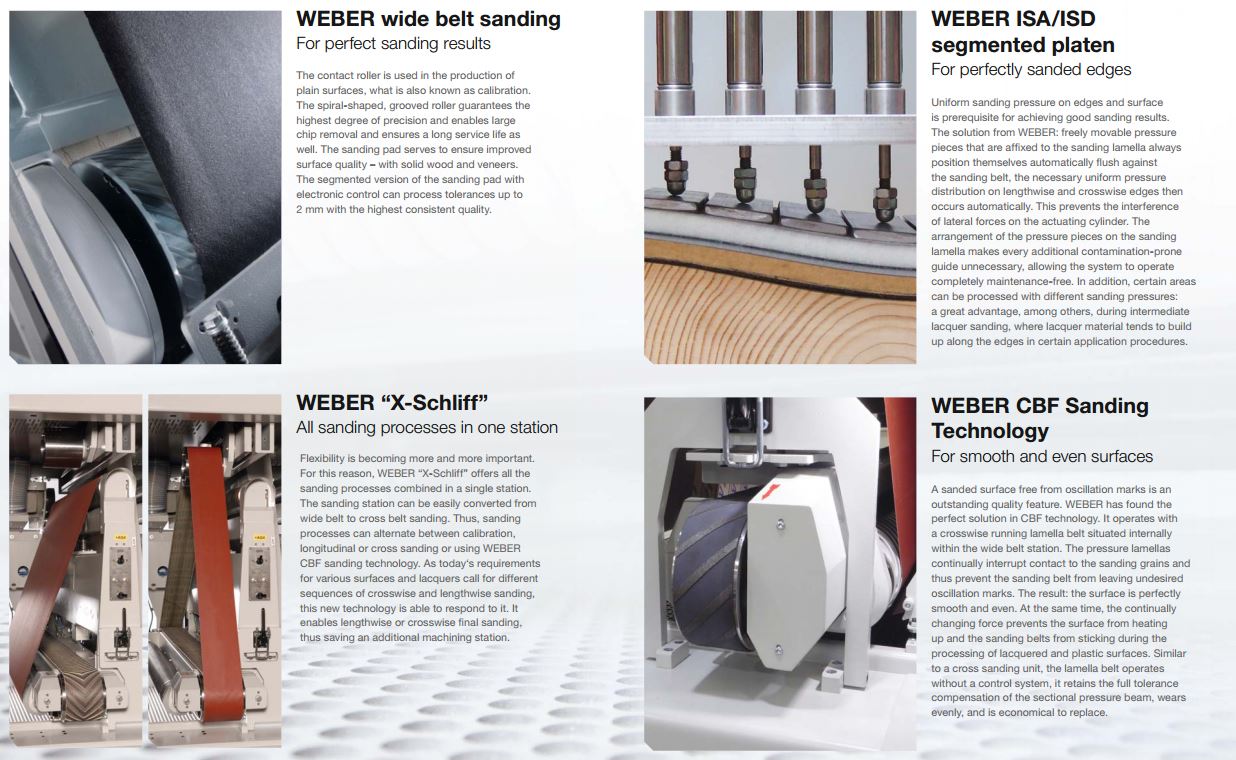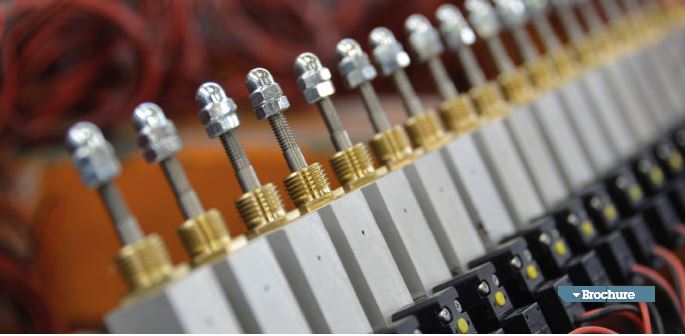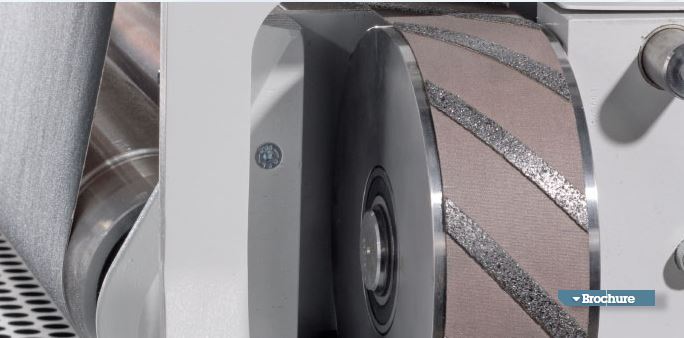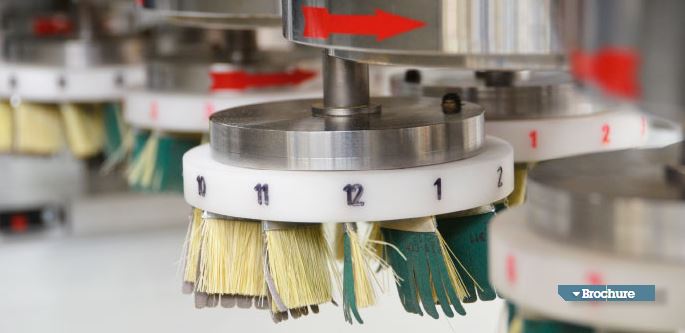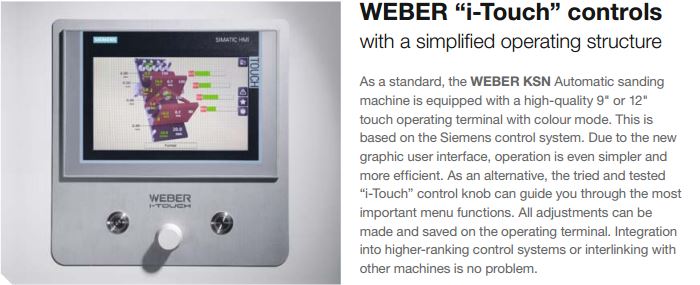WEBER KSN
Automatic sanding machine for wood sanding, veneer sanding and lacquer sanding
The WEBER KSN series is a completely redesigned automatic sanding machine for wood sanding, veneer sanding and lacquer sanding for artisans and industry. Up to 4 sanding stations allow for all machining variations. All the WEBER sanding and brushing stations can be installed in any order, to suit requirements.
WEBER KSN – advantages at a glance:
- New modern design
- New simplified operating structure through WEBER i-Touch with its faster and more easily accessible operating panel
- Larger and variable sanding belt length
- Lateral extending planetary head unit for improved integration into production lines
- Modular design permits arrangement of sanding stations in any order, to suit requirements
- Improved accessibility for maintenance work
- High quality industrial engineering
The design of the WEBER KSN demonstrates a new wood sanding dimension – not only visually.
Thanks to uncompromisingly clean lines and ergonomically well-designed, the WEBER KSN
is one of the most modern automatic sanding machines on the market.
Due to the angled corner positioning, the operation terminal permits better and faster access; all
connections can be installed systematically from the top. Unimpeded vision of the machining
stations is possible thanks to the large vision panel. Access to all electronic and mechanical parts
assists maintenance considerably.
WEBER KSN HIGHLIGHTS
WEBER Wide belt sanding
The contact roller is used in the production of plain surfaces, what is also known as calibration. The spiralshaped, grooved roller guarantees the highest degree of precision and enables large chip removal and ensures a long service life as well. The sanding pad serves to ensure improved surface quality – with solid wood and veneers. The segmented version of the sanding pad with electronic control can process tolerances up to 2 mm with the highest consistent quality.
WEBER Cross sanding
Automatic cross sanding machines for the skilled trades have a long tradition at WEBER. Cross sanding means that the first sanding is performed crosswise to the feed direction and subsequent finish sanding in lengthwise direction. The crisscrossing cutting motion offers advantages over multiple inclined or lengthwise sanding steps. The cross belt operates at a 90° angle perpendicular to the grain. As a result, the fibrous surface texture, which normally runs lengthwise, is divided into small sections and subsequent removal is simplified. This removal is subsequently carried out using one or more wide sanding belts. Due to the crisscrossing sanding directions, considerably fewer and shorter fibres remain on the surface.
WEBER “X-Schliff”
Flexibility is becoming more and more important. For this reason, WEBER “X-Schliff“ offers all the sanding processes combined in a single station. The sanding station can be easily converted from wide belt to cross belt sanding. Thus, sanding processes can alternate between calibration, longitudinal or cross sanding or using WEBER CBF sanding technology. As today‘s requirements for various surfaces and lacquers call for different sequences of crosswise and lengthwise sanding, this new technology is able to respond to it. It enables lengthwise or crosswise final sanding, thus saving an additional machining station.
WEBER ISA/ISD Segmented platen
Uniform sanding pressure on edges and surface is prerequisite for achieving good sanding results. The solution from WEBER: freely movable pressure pieces that are affixed to the sanding lamella always position themselves automatically flush against the sanding belt, the necessary uniform pressure distribution on lengthwise and crosswise edges then occurs automatically. This prevents the interference of lateral forces on the actuating cylinder. The arrangement of the pressure pieces on the sanding lamella makes every additional contaminationprone guide unnecessary, allowing the system to operate completely maintenance-free. In addition, certain areas can be processed with different sanding pressures: a great advantage, among others, during lacquer intermediate sanding, where lacquer material tends to build up along the edges in certain application rocedures.
WEBER CBF Sanding technology
A sanded surface free from chatter marks is an outstanding quality feature. WEBER has found the perfect solution in CBF technology. It operates with a crosswise running lamella belt situated internally within the wide belt station. The pressure lamellas continually interrupt contact to the sanding grains and thus prevent the sanding belt from leaving undesired chatter marks. The result: the surface is perfectly smooth and even. At the same time, the continually changing force prevents the surface from heating up and the sanding belts from sticking during the processing of lacquered and plastic surfaces. Similar to a cross sanding unit, the lamella belt operates without a control system, it retains the full tolerance compensation of the sectional pressure beam, wears evenly, and is economical to replace.
WEBER Brushing technology
WEBER planetary head
With the planetary head technology WEBER is setting new standards in sanding quality. This patented head guarantees a perfect surface regardless of direction of wood fibre or shape of work piece whereby all edges are equally broken during passage. It is also possible to process 3D – surfaces, radius and profiles. During the subsequent lacquering process the wood fibres practically do no more raise up which finally results in lacquer saving and better surface quality.
WEBER texturing brushes
Texturing brushes are used for texturing wood surfaces. The brushes remove softer areas from the wood surface and a ridged surface emerges. For coarse textures metal wire brushes are used, while brushes with abrasive plastic bristles or sanding brushes are used for subsequent smoothing
WEBER brush units
The cross brushing units are used for improving surface quality and for bevelling lengthwise edges. The round brushing units are used for smoothing the surface and for crosswise edging.
WEBER i-TOUCH
Please enter your details below to download the brochure


